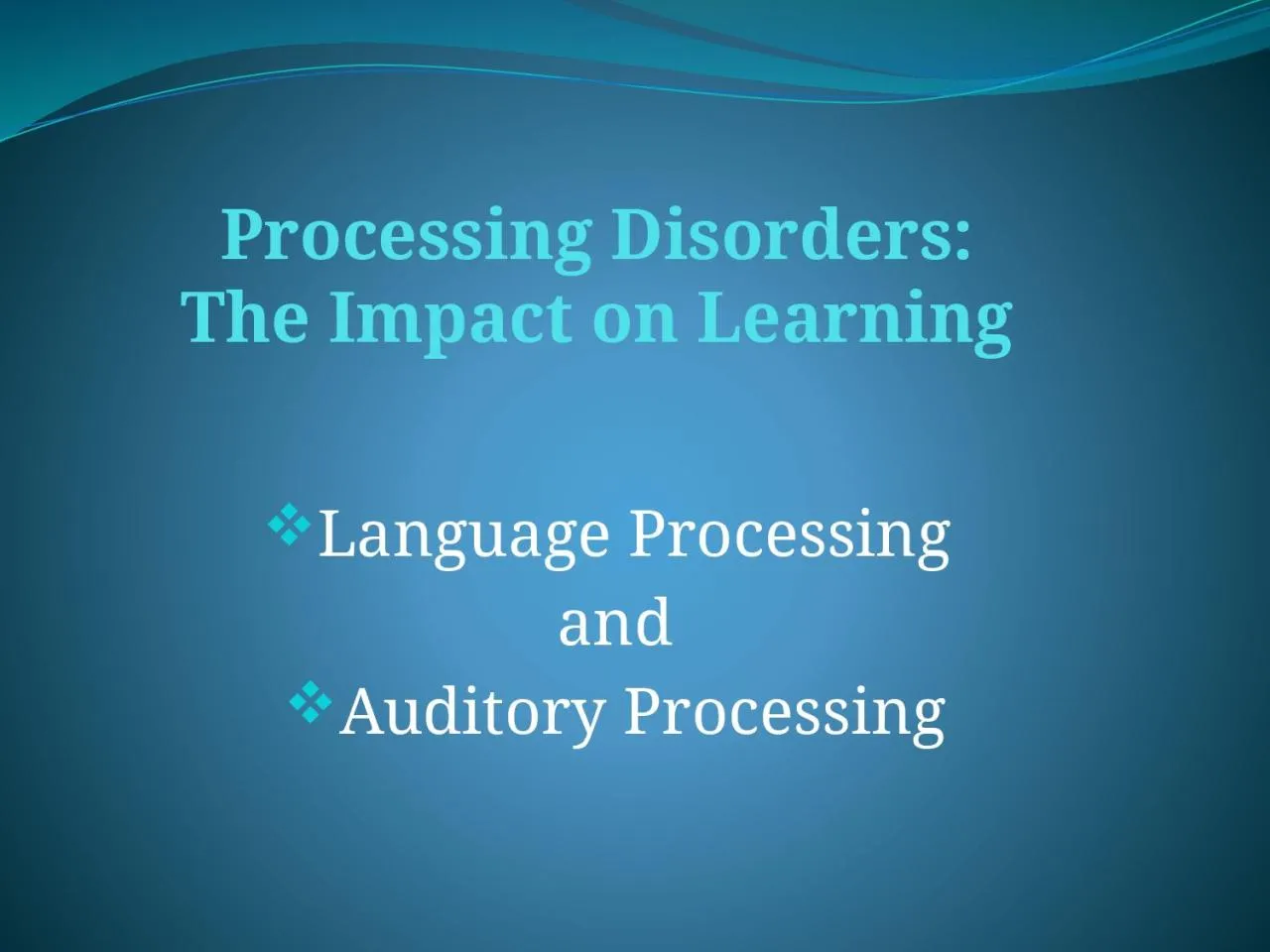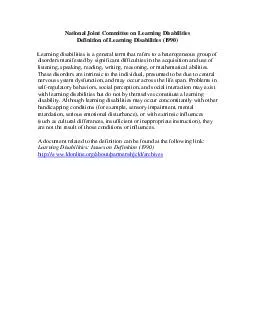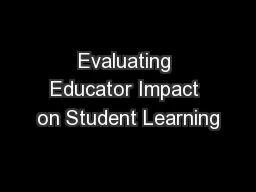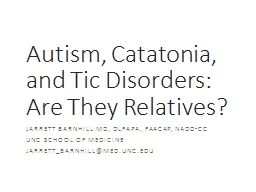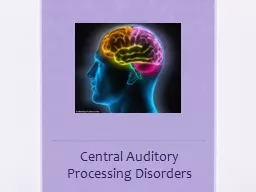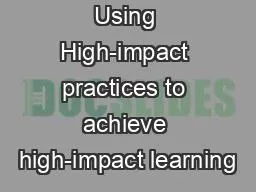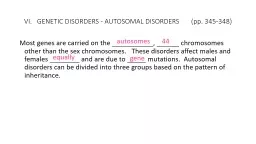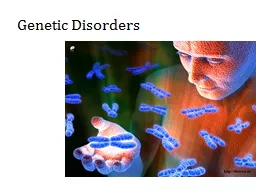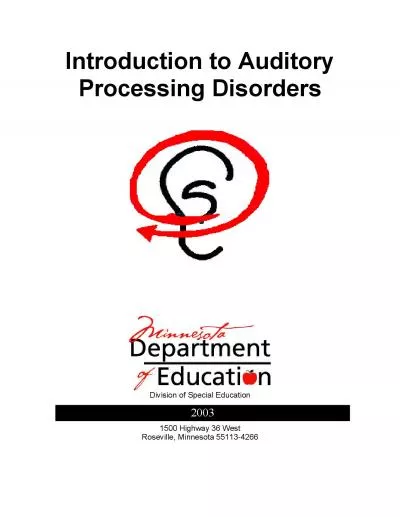PPT-Processing Disorders: The Impact on Learning
Author : jones | Published Date : 2022-06-01
Language Processing and Auditory Processing What is processing The ability to interpret or attach meaning to auditorily received information to then formulate an
Presentation Embed Code
Download Presentation
Download Presentation The PPT/PDF document "Processing Disorders: The Impact on Lear..." is the property of its rightful owner. Permission is granted to download and print the materials on this website for personal, non-commercial use only, and to display it on your personal computer provided you do not modify the materials and that you retain all copyright notices contained in the materials. By downloading content from our website, you accept the terms of this agreement.
Processing Disorders: The Impact on Learning: Transcript
Download Rules Of Document
"Processing Disorders: The Impact on Learning"The content belongs to its owner. You may download and print it for personal use, without modification, and keep all copyright notices. By downloading, you agree to these terms.
Related Documents

